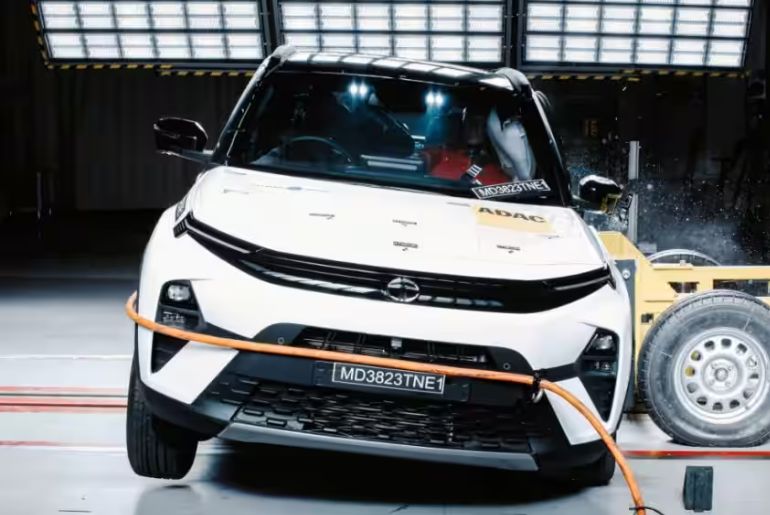Tata Motors has been instrumental in making crash safety a key consideration in buying cars. The art of building safer cars has spread across the range of Tata vehicles, even in the newly-introduced Bharat NCAP (BNCAP) tests.
However, with the growing number of electric vehicles in the industry, do these crash tests apply? Mohan Savarkar, the Chief Product Officer at Tata Motors’ passenger vehicle division, says, “As far as these tests are concerned, there are two parts, and the first is in regards to the occupants of the vehicle and pedestrians — these are the same as ICEs.”
The second part is about the electric components added to a car. These are covered under AIS 98 and 99, which is mandatory for all carmakers, thus, no one can skip these certifications. These cover four aspects — high voltage, which ensures no high voltage components will come into contact with the body during a crash.
“Energy is the second aspect, as some components carry less voltage but higher energy,” adds Savarkar. The third is the intrusion of battery and electrical components in the passenger compartment during a crash, which is similar to an ICE where components should be kept away from the cabin. “The final one is isolation, where electrical parts and parts of the vehicle body have to be at a minimum value.” This ensures that passengers are isolated from electrical components.
Also, another aspect to consider in an EV is that the battery and motor components are heavier, meaning they have more inertia during a crash. To this, the CPO says, “With such a situation, something as minor as braking needs more effort. These have to comply with certain parameters and regulations.”
Since there is additional energy, there have to be ways for the car to absorb these. That said, the crash test speeds have also gone up over the years, and the BNCAP tests currently are being tested at 64 kmph. Complying with certain standards has made Tata SUVs popular, such as the Nexon in its ICE and EV forms, along with the Punch, the best-selling vehicle in March 2024.

